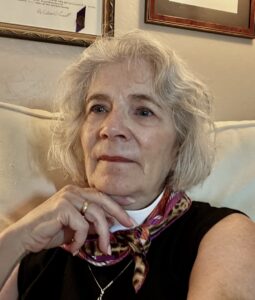Authored By Terri Pilarski, M.Div., M.S.W.
In my thirties, following a career in modern dance and then interior design, I became a stay-at-home mom. After a few years I began looking for something I could do for a little income and to keep me engaged with other adults. At that time massage therapy was emerging as an accredited profession with training and a state license required to practice. I attended a 14-month intensive training. I learned about every muscle, ligament, tendon, and bone in the body, how they moved and worked together. I learned about facia and connective tissue and the idea of referred pain. Sometimes when one has pain in the body the origin of that pain is elsewhere in the body, carried along the facia like a snag in a sweater that runs to a different area. The body communicates in amazing ways and as a massage therapist I loved to follow the path of pain and alleviate it.
Massage therapy connected well to my lifelong practice of transcendental meditation. As a meditator I was attuned to the inner tensions of my own body, listening and wondering how best to address them.
Bowen theory has afforded me concepts that help me unravel the mysterious communication signals that my body sends. These signals reveal internal anxiety in response to my environment, the emotional process all around me, in the interactions with my family, my workplace colleagues, and my community. Learning to interpret them has deepened my appreciation of the body as an ecosystem. An ecosystem is a biological community of interacting organisms and their physical environment. The human body is a complex network, an interconnected system of tiny microbes of bacteria, viruses and fungi. The human body communicates between connected networks, particularly body to brain and brain to body, in an effort to keep the body alive. Bowen theory provides ideas and language to describe this effort, and encourages one to notice the emotions as they become feelings, and then to think about what one wants to do in response.
In the June 6, 2024, episode of On Being, the host Krista Tippet interviewed Janine Benyus and Azita Ardakani Walton. Benyus is a biomimicry pioneer and Walton is a biomimicry practitioner. Together they are thinking about the wisdom the natural world offers human beings in these challenging times; wisdom about healing from trauma and restoring wholeness. They are thinking about how human institutions could be structured like ecosystems, where the parts are all interconnected and support the whole.
Benyus describes how the earth responds to trauma. She gives two examples, a landslide and the destruction after Mt. St. Helen’s erupted. In both cases tiny organisms responded immediately to the wounded land. In the landslide it was tiny seeds that grew weeds. In the volcano it was tiny spiders that blew in. Both loosened the soil and brought birds. The bird droppings fertilized the soil so more plants could grow, bringing in more creatures until the wounded land was healing, and new life was rising up. When our bodies are wounded a similar process of early response happens with tiny organisms showing up as early responders to heal the wound. In all cases it is a complex, interconnected response that leads to healing.
Bowen’s concept of societal emotional process describes a similar complex interconnected response as human societies regress or progress. Societal regression, fueled by chronic anxiety in the larger social arena, produces false beliefs that increase emotionality and decrease the functioning of political and economic systems. This is an anxiety driven decrease in the functional level of differentiation (Kerr, 2019). In a regression, principle-determined decisions give way to a more feeling orientation.
The end of the regression reflects an increase of functional level of differentiation. This functional level increase occurs when people can no longer tolerate the discomfort of the regression. Clearly defined positions arise.
Only time will tell, but as I observe the shifting dynamics in the political landscape of the United States, and other countries, I notice people taking clearly defined positions based in principles, values, and beliefs. Are these early signs of healing?
As a body of people have we reached the point of discomfort where the only response for survival is to change course and seek healing? What might we learn from the natural world, applying ideas from biomimicry, and an ecosystem for healing? How might Bowen theory help inform us in these times?
What I notice in my body is a sense of hope. What I observe is a similar sense from people all around me. As Benyus says in the interview, what are the patterns of connection for healing? And, how are human beings, who are already part of the pattern, going to be part of the knitting together for healing and wholeness?




Leave a Reply